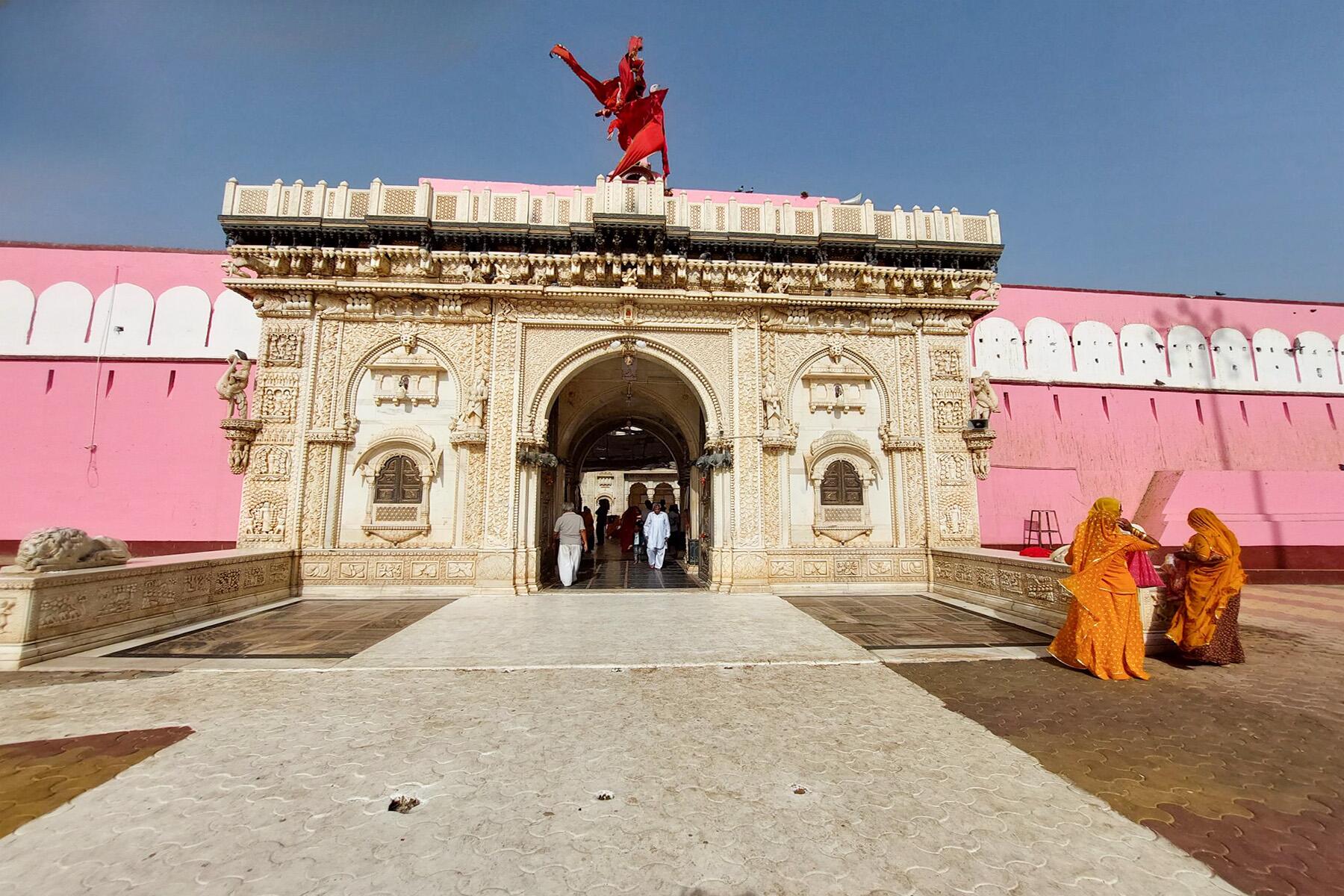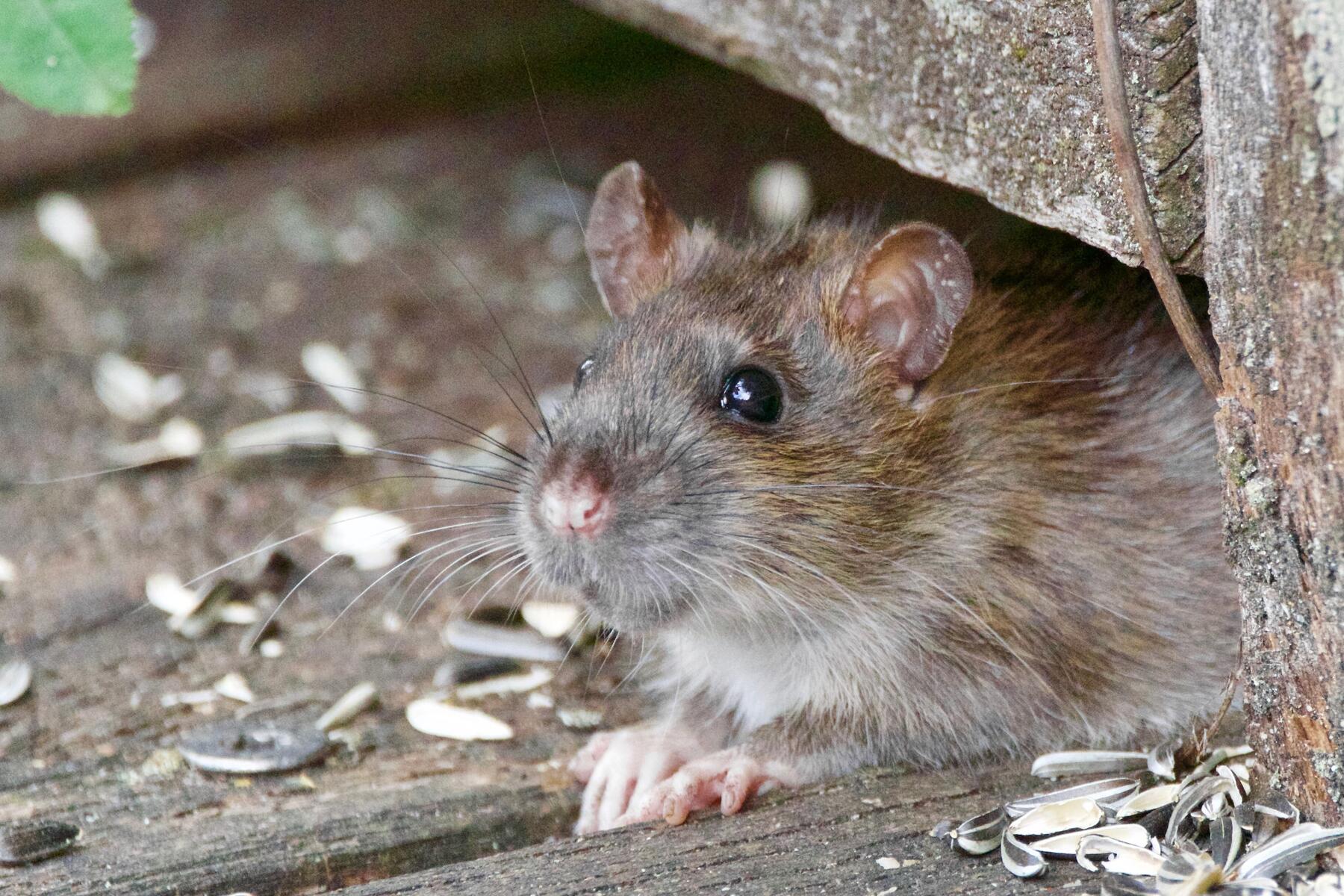The Karni Mata Temple stands as a symbol of coexistence and reverence for all life forms, event rats.
The belief that God exists in everything is a fundamental aspect of many Indian religious traditions, and nowhere is this more evident than at the Karni Mata Temple. Tucked away in the desert town of Deshnok, in the state of Rajasthan, this place of worship accommodates a congregation of more than 25,000 rats. Far from being perceived as vermin, these tiny creatures are revered as sacred entities, embodying the divine.
The Legend of Karni Mata
The genesis of the Karni Mata Temple is rooted in the life of Karni Mata, an esteemed woman of the Charan caste who lived in Rajasthan during the 14th to 16th centuries. Regarded as an incarnation of Durga, the Hindu goddess of power and victory, Karni Mata performed numerous miracles, including resurrecting her stepson, Laxman, who met his demise while attempting to drink water from Kapil Lake near the temple.
Legend has it that Karni Mata implored Yama, the god of death, to restore Laxman’s life. Initially resistant, Yama, moved by her unwavering devotion, acquiesced. In an extraordinary turn of events, Yama reincarnated Laxman and the other followers of the Charan clan into rats, decreeing that, henceforth, Karni Mata’s kin would undergo a cycle of rat incarnation before attaining human rebirth. This miraculous episode solidified Karni Mata’s divine reputation, and her adherents ardently believe in her ongoing protective influence.
Recommended Fodor’s Video
Today, affectionately known as kabbas, the rats, believed to be the reincarnated souls of Karni Mata’s clan members, freely wander the temple grounds. Even during the most severe plagues, these temple rats have been untouched. It is said that, although they are free to leave, the rats never venture beyond the temple grounds.

Local Beliefs
Several beliefs are intertwined with rats, constituting a significant part of the Karni Mata temple narrative. Among these, the most renowned is the notion that encountering an albino rat amid the sea of black and brown counterparts is considered highly auspicious. Although these white rats are seldom seen, spotting one is believed to be a direct blessing from the Goddess, promising good fortune and a positive turn of events in the observer’s life.
Devotees also believe that if a kabba traverses over one’s feet, it signifies good luck. Another intriguing aspect of the temple revolves around the idea that if a rat is inadvertently killed, it must be replaced with one made of solid silver or gold as an act of penance. This practice underscores the deeply ingrained reverence and respect for the temple’s rodent population.
Daily Rituals Are a Spectacle to Behold
The priests devoutly perform morning and evening aarti (ceremonial prayer) and offer prasad (food offerings) meticulously prepared by them. Simultaneously, a dedicated ensemble of musicians fills the air with bhajans (devotional songs) and soulful tunes played on folk instruments such as the dholak and harmonium. In this harmonious setting, the faithful express their devotion to Karni Mata by offering the rats milk, sweets, and grains, considering them divine messengers.
For some, the sight of people sitting nonchalantly amidst swarms of rats, offering them food, is a remarkable and surreal experience, unique to this temple. As a curious traveler, I observed this ritual closely. Initially hesitant, I was drawn in by the contagious devotion and faith around me and tentatively extended my hand, offering a small amount of milk to a rat. To my surprise, it accepted my gesture without hesitation. This interaction marked a turning point in my visit, as I began to understand that the rats were not merely rodents but revered manifestations of the divine.
Architectural Extravaganza Amidst Desert Serenity
While the temple’s star attraction is undoubtedly the rats, the structure itself–a blend of Rajputana and Mughal styles–is a testament to the rich architectural heritage of Rajasthan. Upon entering, a captivating courtyard unfolds, surrounded by smaller shrines and the main sanctum, believed to have been built in the 15th century in homage to Karni Mata. The deity’s idol, adorned with exquisite ornaments, emanates a serene aura that draws devotees, prompting me to join in prayer.
The temple’s exterior, a 20th-century addition by Maharaja Ganga Singh of Bikaner, boasts a white marble facade that gleams in the desert sunlight. Silver doors intricately carved with frescoes depicting Hindu deities and mythological tales adorn the entrance, complemented by jharokha windows on the outer wall featuring trident and rat carvings. Two lions flank the grand entrance gate, symbolic of Goddess Durga’s vehicle. The temple’s elaborate latticework and silver embellishments exude timeless beauty, transporting visitors to a bygone era.

Rat Symbolism in Hinduism
In Hinduism, rats hold unique symbolism as the elephant-headed Lord Ganesha’s vahana (mount), signifying the deity’s ability to conquer any obstacle of any size. This symbolism aligns with the reverence for rats at the Karni Mata Temple, where they are seen as intermediaries between devotees and the divine.
The Festival of Karni Mata
The temple gains unparalleled vibrancy during the biannual Karni Mata Fair. Taking place during the Navratri festival, typically in the Hindu months of Chaitra (March-April) and Ashwin (September-October), this event transcends mere religious significance, evolving into a cultural spectacle featuring folk music, dances, processions, puppet shows, and an assortment of stalls selling local handicrafts and delicacies. Meanwhile, the temple itself becomes aglow with oil lamps and resonates with devotional songs, accompanied by the rhythmic beats of drums, creating a truly transcendental atmosphere. During this time, devotees from far and wide gather to pay their respects to Karni Mata and her revered rat companions.

Collective Efforts to Ensure Rats Remain Part of the Temple’s Unique Ecosystem
Despite the deep devotion and mystical aura surrounding the Karni Mata Temple, it has not been without its share of controversy and challenges. The substantial rat population, at times, has sparked concerns regarding hygiene and sanitation. However, temple authorities, backed by the local community and devotees, have been proactive in ensuring the well-being of the rats. While most follow lunar cycles for temple duties, some families reside permanently, caring for rats and maintaining hygiene by removing excrement and food crumbs from the floor. No recorded cases of humans contracting a disease from the temple rats exist.
Temple Customs and Etiquette
Should you visit the temple, be mindful of the following:
– In adherence to Indian temple tradition, remove shoes and socks before entering the premises.
– Dress modestly, covering shoulders and knees.
– While photography is allowed, refrain from using flash photography and respect other visitors and their privacy.
– Avoid shuffling your feet to prevent any accidental harm to the rats.
– Wash hands post-rat interaction and before partaking in any temple rituals.
– Make food offerings only in the designated areas.
How to Get There
Deshnok has a small train station conveniently located within walking distance of the temple. Alternatively, you can hire a cab from the closest major city, Bikaner, or catch one of the buses that regularly drive State Highway 62 between Bikaner and Jodhpur.



